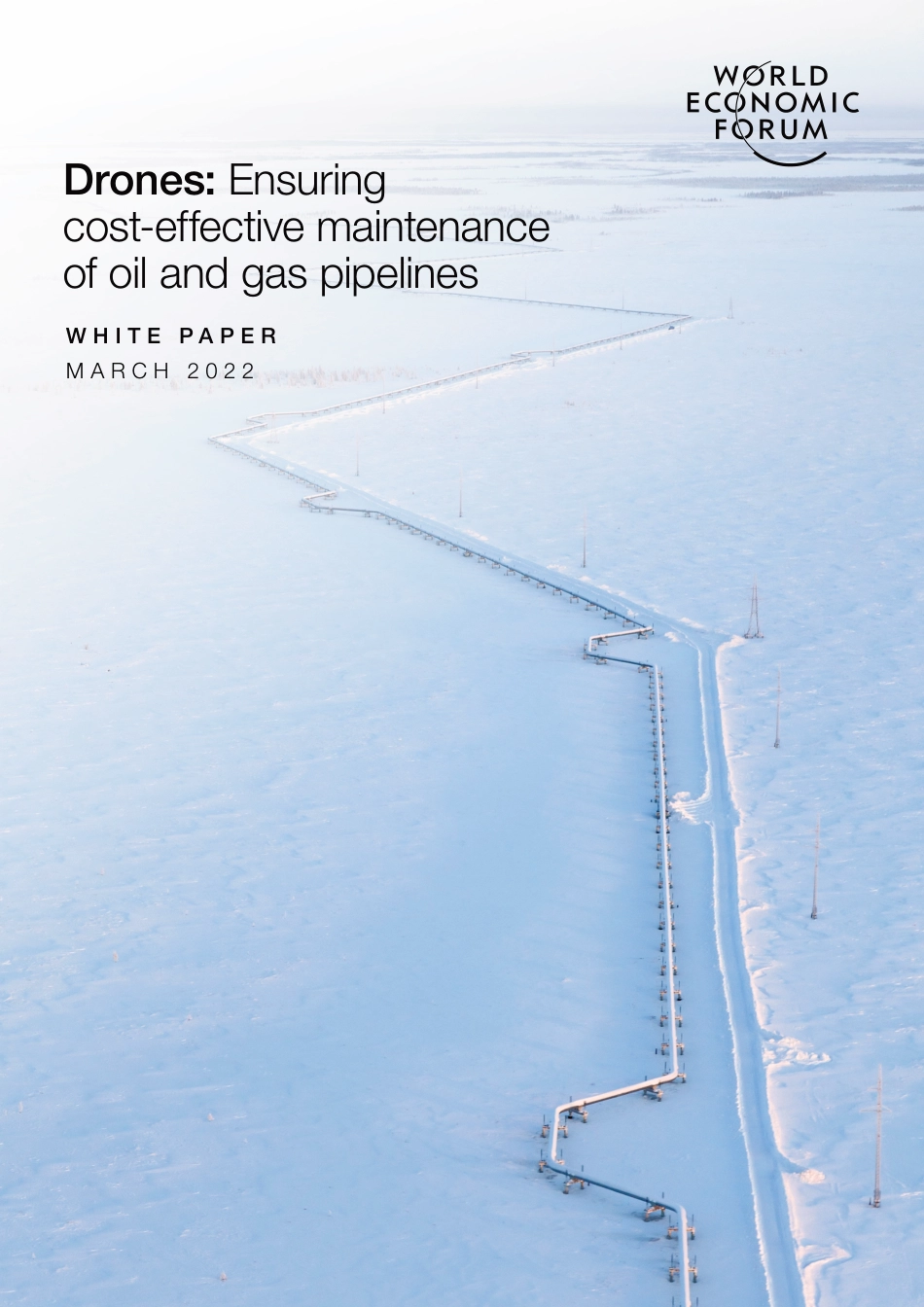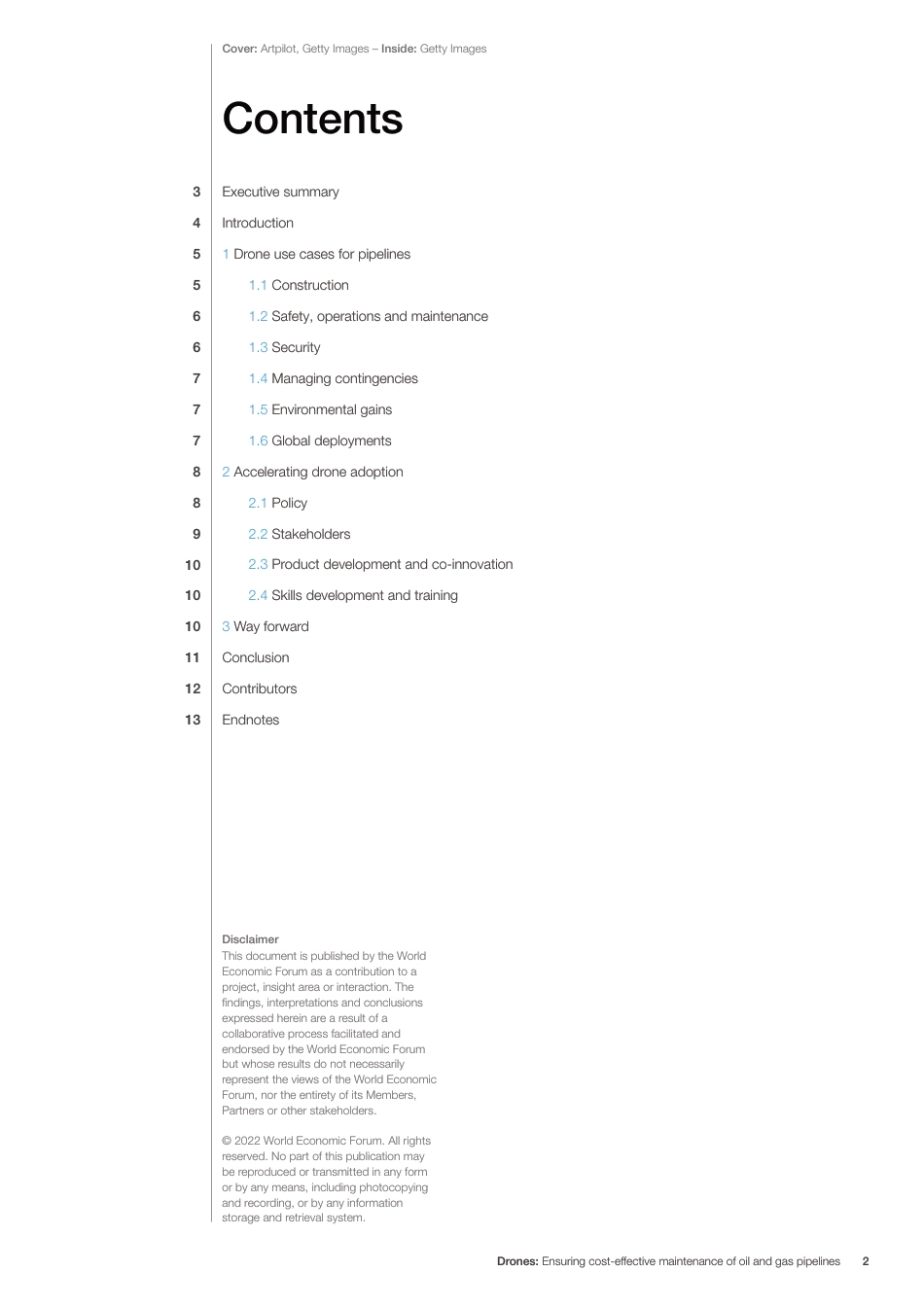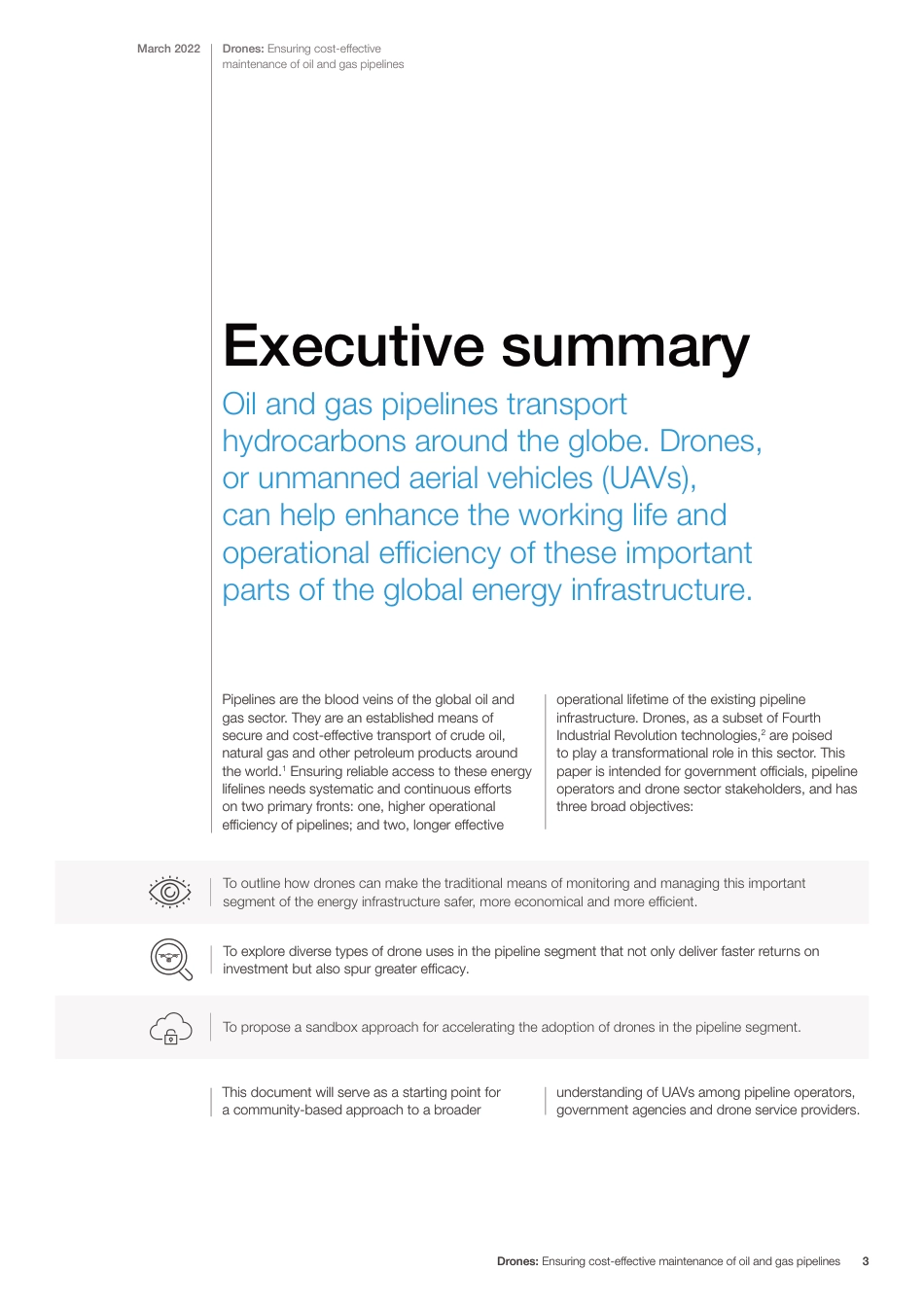Drones: Ensuring cost-effective maintenance of oil and gas pipelinesW H I T E P A P E RM A R C H 2 0 2 2ContentsExecutive summaryIntroduction1 Drone use cases for pipelines1.1 Construction1.2 Safety, operations and maintenance1.3 Security1.4 Managing contingencies1.5 Environmental gains1.6 Global deployments 2 Accelerating drone adoption 2.1 Policy2.2 Stakeholders2.3 Product development and co-innovation2.4 Skills development and training3 Way forwardConclusionContributorsEndnotes345566777889101010111213Cover: Artpilot, Getty Images – Inside: Getty Images© 2022 World Economic Forum. All rights reserved. No part of this publication may be reproduced or transmitted in any form or by any means, including photocopying and recording, or by any information storage and retrieval system.DisclaimerThis document is published by the World Economic Forum as a contribution to a project, insight area or interaction. The findings, interpretations and conclusions expressed herein are a result of a collaborative process facilitated and endorsed by the World Economic Forum but whose results do not necessarily represent the views of the World Economic Forum, nor the entirety of its Members, Partners or other stakeholders.Drones: Ensuring cost-effective maintenance of oil and gas pipelines2Executive summaryPipelines are the blood veins of the global oil and gas sector. They are an established means of secure and cost-effective transport of crude oil, natural gas and other petroleum products around the world.1 Ensuring reliable access to these energy lifelines needs systematic and continuous efforts on two primary fronts: one, higher operational efficiency of pipelines; and two, longer effective operational lifetime of the existing pipeline inf...



